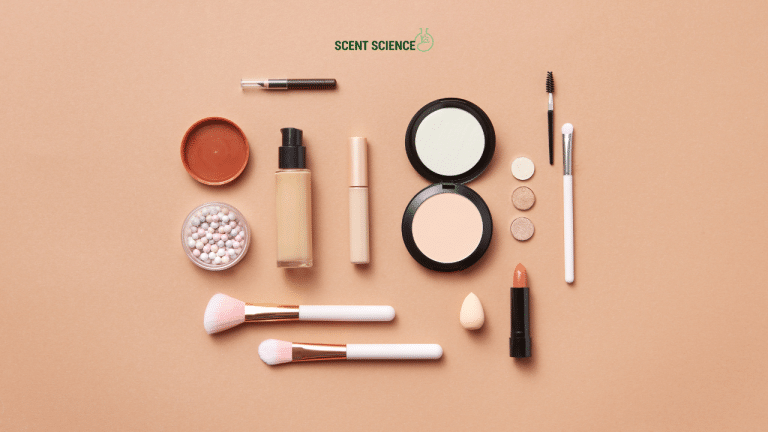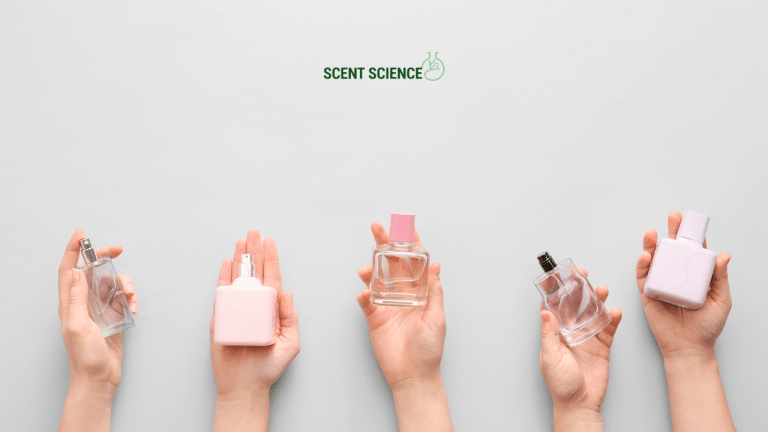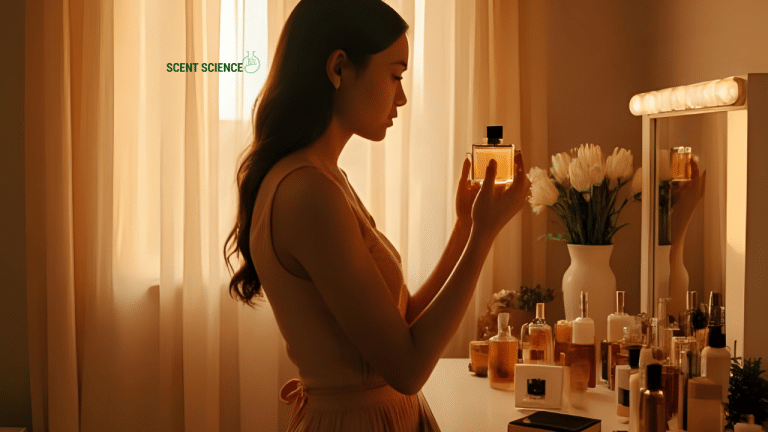Welcome to an exploration of mindfulness through scent—an ancient yet scientifically supported method to enhance present-moment awareness and cultivate emotional wellness. 🌿 With a foundation firmly rooted in both tradition and modern research, our journey today is to uncover how scent mindfulness can serve as a powerful tool for focusing attention, grounding emotions, and enriching our sensory experiences. Let’s delve deeper into how scents can be your unwavering anchor in the vast sea of the present moment.
Table of Contents
ToggleIntroduction to Mindful Scents
When it comes to mindfulness, most people think mainly of breathwork or meditation. But there is an understated dimension—scent mindfulness—that can significantly bolster our mindfulness practices. Research reveals that scents have a rapid impact on the limbic system, the part of the brain responsible for emotions and memories, suggesting that what we smell can influence what we feel and recall in profound ways. This connection between olfaction and emotion isn’t just poetic—it’s a neuroscientific fact that makes scent an excellent candidate for present-moment awareness enhancement.
> **Fun Fact:** The link between scent and emotion is so potent that the fragrance industry often invests heavily in research to understand consumer emotional responses, utilizing scents for therapeutic applications beyond mere olfactory pleasure.
Understanding the Mechanics of Scent Mindfulness
Sense and Sensibility: The Olfactory System
In the realm of sensory awareness, our olfactory senses operate more rapidly than we often realize. When a fragrance molecule enters the nose, it binds to receptors that immediately send signals to the brain. This journey is much quicker than visual or auditory stimuli processing, making scent a unique ally for real-time mindfulness exercises.
**Diagram: Olfactory Signal Pathway**
[ Scent molecule ] –> [ Olfactory Receptors ] –> [ Olfactory Bulb ] –> [ Limbic System ]
Case Study: Aromatherapy for Stress Reduction

A study published in the *Journal of Physiological Anthropology* investigated the calming effects of lavender oil during stressful memory tasks. Participants exposed to lavender fragrance reported reduced stress markers, suggesting a link between scent mindfulness and stress alleviation. By integrating scent into mindfulness practices, individuals reported elevated levels of focus and mood appreciation.
The Benefits of Scent as a Present Moment Anchor
Scent mindfulness offers several benefits that distinguish it from other forms of meditation:
- Immediate Engagement: Due to the swift processing of olfactory information, one can quickly achieve heightened awareness with minimal setup.
- Emotional Regulation: Leveraging scents like chamomile or bergamot can regulate mood swings and promote emotional stability.
- Enhanced Memory and Concentration: Engaging scent cues with meditation improves cognitive clarity and memory formation.
Standards and Best Practices
According to the International Fragrance Association (IFRA), the best results often come when fragrances adhere to specific purity standards and sustainability practices. When choosing scents for mindfulness, ethically sourced and naturally derived oils are ideal.
Practicing Scent Mindfulness: A Step-by-Step Guide
To embrace scent mindfulness, follow these procedural steps founded on empirical insights and user experience:
Step 1: Selection of Scents
Research shows that different scents evoke different emotions and states:
- Citrus Scents (e.g., orange, lemon) – Energizing and invigorating
- Floral Scents (e.g., rose, lavender) – Soothing and calming
- Woodsy Scents (e.g., sandalwood, cedar) – Grounding and earthy
Step 2: Mindfulness Setup

Create an environment conducive to sensory awareness. Dim the lights, minimize interruptions, and ensure ventilation to fully appreciate scent profiles without harsh overlays.
Step 3: Focus and Breathing Techniques
- Deep Breathing: Inhale the chosen fragrance slowly through your nose and hold briefly, allowing the scent to permeate your senses.
- Visualization: As you breathe in, visualize the aroma expanding throughout your body, grounding you more deeply into the present moment.
Step 4: Emotional and Sensory Reflection
- Identify Emotions: Notice what feelings the scent evokes. Are there memories or sensations coming to the fore?
- Log Observations: Maintaining a scent journal can help you understand patterns and personal responses over time, such as “Lavender consistently eases my evening anxiety.”
Elevating Mindfulness with Professional Insights
To deepen your practice, insights from experts in mindfulness and olfaction can prove invaluable. Ann Smith, a leading aromatherapist, suggests creating a customized fragrance blend tailored to one’s specific emotional needs—combining, for instance, bergamot for mood lifting and ylang-ylang for relaxation.
Further, research supports cross-sensory reinforcement, where combining fragrance with complementary visual cues—like the color associated with the scent—can potentiate sensory impression and mindfulness discipline.
Advanced Applications and Future Trends
Integrative Therapy Approaches
In therapeutic settings, integrating scent mindfulness into holistic treatment plans has shown positive outcomes in patients with PTSD and anxiety disorders. Multi-modal therapies that incorporate scent have been acknowledged in publications such as the *JAMA Network Open*.
Smart Aromatherapy Devices

Advancements in digital tech have brought to life smart aroma-diffusing devices that sync with meditation apps. These devices allow for precision control over scent diffusion, aligning aromatic sequences with guided meditation patterns to enhance focus and relaxation.
Community Insights
User communities highlight the diverse uses of scent mindfulness and share personal experiences and mixes. Engaging with platforms like Reddit’s r/aromatherapy or dedicated mindfulness forums helps understand broadly how scent impacts wellness.
Challenges and Considerations
Allergies and Sensitivities
Individuals with chemical sensitivities should approach scent mindfulness cautiously. It’s recommended to conduct patch tests and consult healthcare providers when introducing new elements to your mindfulness routine.
Committment to Sustainability
Environmental impact is a growing concern; select fragrance brands consciously working towards sustainable sourcing. Certifications from eco-friendly organizations signal such commitments.
Conclusion: Harnessing the Power of Scent Mindfulness 🌱
In this guide, we’ve explored the robust potential of scent mindfulness as a resonant present-moment anchor. Backed by scientific inquiry and enriched by experiential testimonials, scent mindfulness stands out as an accessible yet profound practice to enhance emotional wellness and sensory engagement. By immersing oneself in the world of aromas, not only can you ground yourself deeper in the moment but also enrich your holistic self-understanding.
As you breathe in the wisdom of scents, let each aroma carry you to a place of calm, focus, and introspection. Whether you’re a professional in emotional wellness or simply an enthusiast, scent mindfulness promises an ever-evolving, engaging venture into the art of being present.
Always consider personal preferences and sensitivity limits when selecting scents, and avail yourself to the expansiveness that mindful olfactory pursuits inherently offer. This multifaceted tool in the mindfulness journey promises both immediate and long-term benefits to practitioners.
Frequently Asked Questions
What are the benefits of using a hair mask in my hair care routine?
Using a hair mask can provide several benefits, including hydration, smoothing, strengthening, curl definition, heat protection, and damage repair. Hair masks infuse the hair with moisture, help coat the hair shaft to seal split ends, reduce breakage, and protect the hair from heat styling and environmental damage[1][4].
What ingredients should I look for in a hair mask?
Effective hair masks often include ingredients such as coconut oil, argan oil, shea butter, honey, avocado oil, green tea, and coconut water. These ingredients provide nourishment, moisturize, and protect the hair, offering benefits like softening, moisturizing, and protecting against damage[2][5].
How often should I use a hair mask in my routine?
You should use a hair mask whenever your hair feels dry, unmanageable, or in need of intense hydration. This can vary depending on your hair type and needs, but generally, using a hair mask once or twice a week can help maintain healthy and moisturized hair[1][4].
How do I apply a hair mask for the best results?
To apply a hair mask effectively, shampoo your hair first, then apply the mask, focusing especially on the ends where hair tends to be the most damaged. Leave the mask on for anywhere from 10 minutes to overnight, depending on the type of mask and your hair’s needs[1][4].
References







